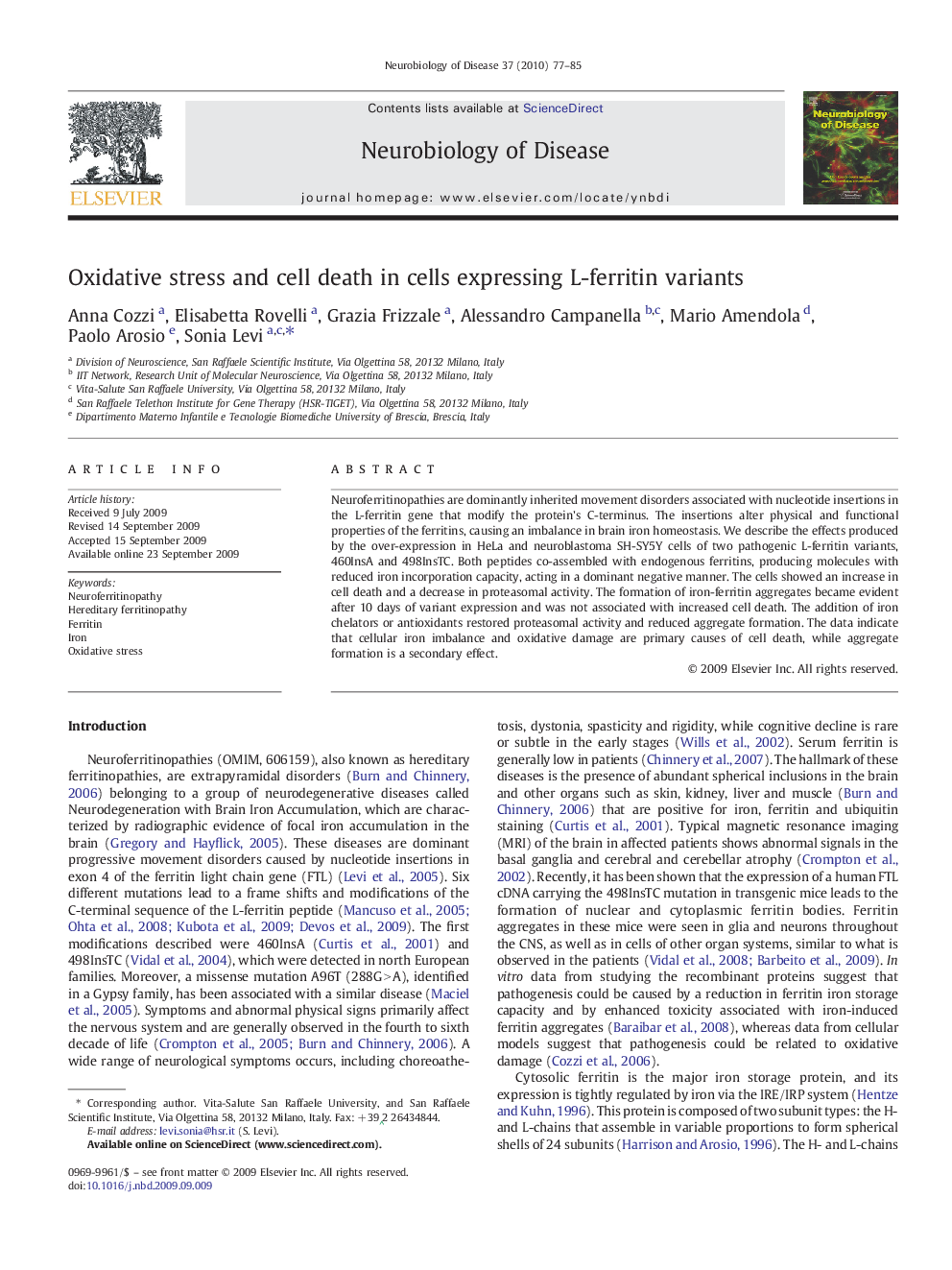| Article ID | Journal | Published Year | Pages | File Type |
|---|---|---|---|---|
| 6022968 | Neurobiology of Disease | 2010 | 9 Pages |
Abstract
Neuroferritinopathies are dominantly inherited movement disorders associated with nucleotide insertions in the L-ferritin gene that modify the protein's C-terminus. The insertions alter physical and functional properties of the ferritins, causing an imbalance in brain iron homeostasis. We describe the effects produced by the over-expression in HeLa and neuroblastoma SH-SY5Y cells of two pathogenic L-ferritin variants, 460InsA and 498InsTC. Both peptides co-assembled with endogenous ferritins, producing molecules with reduced iron incorporation capacity, acting in a dominant negative manner. The cells showed an increase in cell death and a decrease in proteasomal activity. The formation of iron-ferritin aggregates became evident after 10Â days of variant expression and was not associated with increased cell death. The addition of iron chelators or antioxidants restored proteasomal activity and reduced aggregate formation. The data indicate that cellular iron imbalance and oxidative damage are primary causes of cell death, while aggregate formation is a secondary effect.
Related Topics
Life Sciences
Neuroscience
Neurology
Authors
Anna Cozzi, Elisabetta Rovelli, Grazia Frizzale, Alessandro Campanella, Mario Amendola, Paolo Arosio, Sonia Levi,
